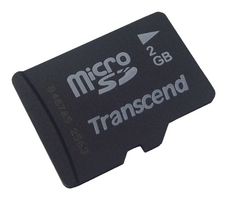-

Harnessing the Power of Raspberry Pi 4: Real-World Applications and Setup Guide
Raspberry Pi 4, the latest iteration of the popular single-board computer, has revolutionized the world of embedded systems and DIY electronics. Learn more... -

POTENTIOMETER AND RHEOSTAT
When it comes to controlling electrical currents, two devices often come into consideration: rheostats and potentiometers. Learn more... -

Find the right electronic part
Do you know exactly what electronic part you’re looking for? Great! Then you can easily find the best price on the market at Components CSE. Here is a guide on how to use Components CSE -

T Flip-Flops and Its Working: A Comprehensive Guide
Flip-flops are fundamental building blocks in digital electronics, and among the various types, the T flip-flop stands out for its versatility and essential role in sequential circuit design. -

Small Wonder: Advancements in the Miniaturisation of Capacitor Parts
As technology progresses, the demand for smaller and more powerful electronic devices has driven remarkable advancements in the miniaturisation of components like capacitors..
eMMC Memory
eMMC (embedded MultiMediaCard) Memory is a popular and versatile embedded storage solution widely used in consumer electronics and mobile devices. In this category overview, we'll explore what eMMC memory is, how it works, its advantages and disadvantages, the different types available, its applications, considerations when choosing eMMC memory, speed, history, and the prominent manufacturers in this field.
What is eMMC?
eMMC, short for embedded MultiMediaCard, is an embedded flash memory storage solution that integrates NAND flash memory and a flash memory controller into a single package. It's a cost-effective and space-efficient way to provide non-volatile storage in devices.
How Does eMMC Memory Work?
eMMC memory operates by using NAND flash memory to store data. A flash memory controller manages the read and write operations, ensuring data is reliably written and read from the memory cells.
Advantages and Disadvantages of eMMC Memory
Advantages:
- Compact Form Factor: eMMC packages are small, making them ideal for space-constrained devices.
- Cost-Effective: eMMC memory is typically more affordable than other flash memory solutions.
- Reliability: With wear-leveling and error correction features, eMMC provides reliable data storage.
- Easy Integration: It's designed for easy integration into embedded systems and devices.
Disadvantages:
- Limited Capacity: eMMC memory tends to have smaller storage capacities compared to other flash memory solutions.
- Non-Upgradeable: In many cases, eMMC memory is soldered to the device's PCB, making upgrades difficult.
- Speed: While faster than traditional HDDs, eMMC may not match the speed of high-end SSDs.
Types of eMMC Memory
eMMC memory doesn't have extensive variations like other memory types. Instead, it's classified by its storage capacity and speed class. Speed classes include eMMC 5.1, eMMC 5.0, eMMC 4.5, and so on.
Application Areas of eMMC Memory
- Mobile Devices: eMMC is commonly used in smartphones, tablets, and other portable devices for data storage.
- Consumer Electronics: It's employed in digital cameras, smart TVs, and set-top boxes for storage needs.
- Automotive Systems: eMMC is used in infotainment systems and embedded control units.
- Industrial and IoT Devices: eMMC serves as storage in a wide range of industrial and IoT applications.
- Medical Devices: Some medical devices use eMMC for reliable data storage.
Things to Consider When Choosing eMMC Memory
- Storage Capacity: Determine the required storage capacity for your device or application.
- Speed Class: Choose the speed class that aligns with your data transfer requirements.
- Durability: Consider the environmental conditions where the device will operate.
- Integration: Ensure compatibility with your device's PCB and space constraints.
How Fast is eMMC Memory?
eMMC memory offers a range of speed classes, with the latest iterations providing read and write speeds that are significantly faster than traditional HDDs, making it suitable for consumer electronics and mobile devices.
History of eMMC Memory
- eMMC memory was introduced in 2006 by the JEDEC Solid State Technology Association.
- It was initially designed for use in mobile phones but has since expanded to various applications.
- Advances in NAND flash memory technology have improved the performance and capacity of eMMC.
Popular Brands that Manufacture eMMC
- Samsung: Samsung offers a range of eMMC memory solutions for diverse applications.
- SanDisk (Western Digital): SanDisk provides eMMC products known for their reliability.
- Toshiba: Toshiba produces eMMC memory modules suitable for a wide range of devices.
Results:697
| Image | MPN | Manufacturer | Datasheet | ROHS | Price | Stock | Updated at |
|---|---|---|---|---|---|---|---|

|
Transcend |
Datasheet |
Not Compliant | Loading.. | Loading.. | 1 second ago | |

|
Transcend |
Datasheet |
Not Compliant | Loading.. | Loading.. | 1 second ago | |

|
Transcend |
Datasheet |
Not Compliant | Loading.. | Loading.. | 1 second ago | |

|
INTEGRAL |
Datasheet |

|
Loading.. | Loading.. | 1 second ago | |
|
|
Integral |
Datasheet |
Not Compliant | Loading.. | Loading.. | 1 second ago | |

|
Delkin Devices |
Datasheet |
Not Compliant | Loading.. | Loading.. | 1 second ago | |

|
Delkin Devices |
Datasheet |
Not Compliant | Loading.. | Loading.. | 1 second ago |
Results:697








